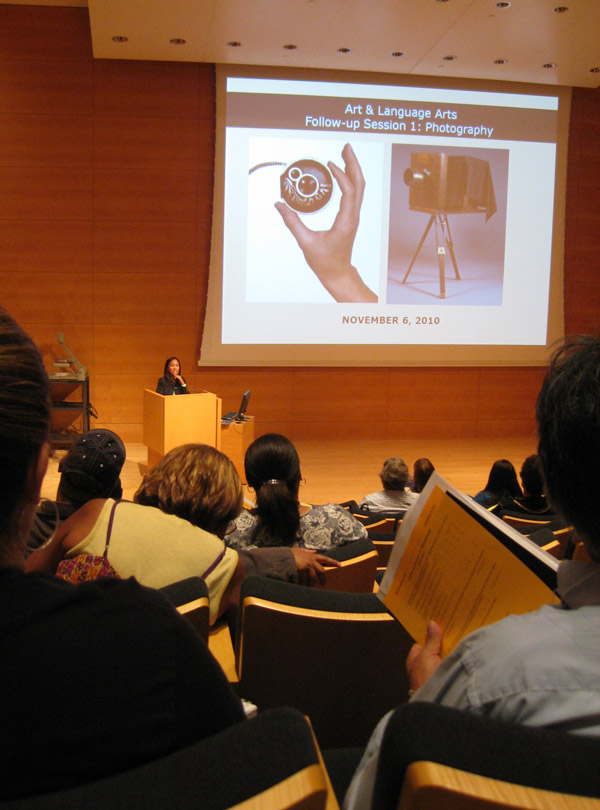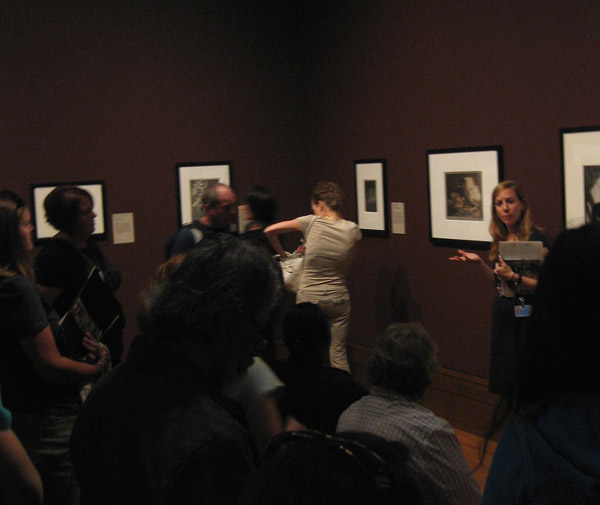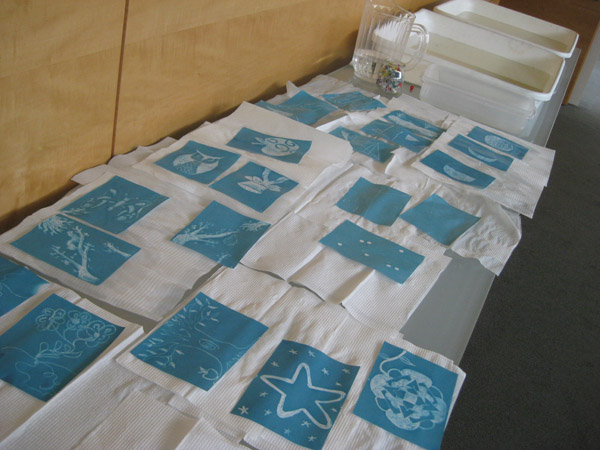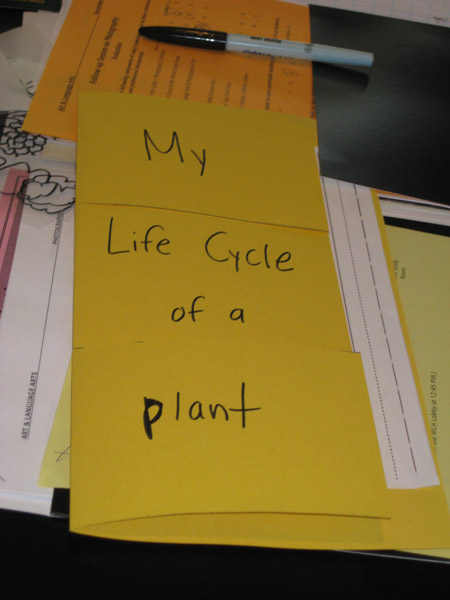The Art & Language Arts teachers who participated in their Culminating Event yesterday demonstrated that 5th grade students can analyze an 18th-century portrait with astute insights, 1st graders can create adorable clay animal sculptures with detailed textures, and 2nd graders can identify grotesques in works of art. Congratulations to the teachers who completed an intensive year of professional development. We commend you for your dedication to your teaching practice!
-

-
Illustrator and author Stefan Bucher’s monster drawings inspired students around the world–and everyone in the room!
-

-
Stefan Bucher describes how students would draw the features of their monsters with intentionality and then create intricate stories about them.
-

-
Jefferson E.S. teacher Rea Young describes how her 1st grade students first analyzed the detailed textures in bronze sculptures before creating their own clay artworks.
-

-
An 18th-century portrait was the inspiration for Fred Torres’s 5th grade students at Century Park E.S., who inferred what the sitter was thinking and then wrote narratives.
-

-
Alexander Science Center School teacher Antoinette Pippin displays the colorful grotesque-filled panels her 2nd grade students made collaboratively.
-

-
The “lesson fair” showcasing teachers’ lessons and the resulting student works of art was chock full of rich and imaginative ideas!
-

-
Century Park E.S. teacher Donna Jones explains her lesson on still-lifes to a captive group of teachers.
-

-
MaryAnn McCarter and Jesus Herrera, teachers at Jefferson E.S., displayed lessons on insect drawings and still-life photography, respectively.
-

-
A detail of works of art by MaryAnn McCarter’s talented students.
-

-
Look how much students can write about when responding to works of art!
-

-
Van Deene E.S. teacher Barbara Heughins uses a colorful quilt made by her daughter to teach color lessons.
-

-
Kennedy E.S. teacher Lisa Heather displays her upper elementary students’ dynamic compositions of still lifes.
-

-
The 3rd grade students of Gerardo Lopez, teacher at Kennedy E.S., drew still-lifes in three different ways –in sketches, pastels, and watercolors.
-

-
Sorolla y Bastida’s The Wounded Foot was the inspiration for Marilyn Taylor Kremen’s 2nd grade students, who wrote and illustrated stories about helping others.
-

-
Leticia Lopez’s 4th grade students at Kennedy E.S. created hybrid creatures inspired by illuminated manuscripts.
-

-
Yvonne Shute’s 4th grade students learned about one-point perspective after examining David Hockney’s Pearblossom Highway.
-

-
Kennedy E.S. teacher Marisela Reyes describes her lesson that invites 5th grade students to create self-portraits and write “I am” poems.
-

-
Ellen Ochoa L.C. principal Mara Bommarito and teacher Allison Chun admire Gabriela Vielma’s lesson on stories inspired by Brueghel the Elder’s painting of Noah’s Ark.
-

-
Ellen Ochoa L.C. teacher Allison Chun used collage to teach the concept of overlapping to create the illusion of depth.
-

-
Teacher Martha Martinez teamed up with ALA alum Elida Lozano to start a Student Artist of the Month program, in which the work of a student would be displayed in the hallways.
-

-
Do you recognize this costume and pose? Hint: it’s based on a Flemish portrait.
Current participants of the Art & Language Arts Summer Seminar return to the Getty Center to learn about photography from many different angles (pun intended)!
-

-
Teachers learn about the depth and breadth of the Getty’s collection of photographs—over 100,000 and going strong!
-

-
We’re on our way to the award-winning exhibition Engaged Observers: Documentary Photography since the Sixties.
-

-
Family portraits in the exhibition can connect to students’ photographs of their families.
-

-
Teachers find a variety of textures in still life photographs.
-

-
Participants pose outside of the Photo Study Room, where pictures by Dorothea Lange, Diane Arbus, Robert Capa, and other photography masters were displayed around the room for close inspection.
-

-
Photographer Luther Gerlach explains how light passes through a lens while standing behind a humongous camera.
-

-
4th-5th grade teachers use the pinhole cameras they created out of paint and coffee cans.
-

-
In the Central Garden, teacher Gabriela Vielma was excited to try out her new camera.
-

-
Teacher Trish Birk gets creative with the positioning of her pinhole camera.
-

-
Teacher Marisela Reyes places her camera on the ground for an interesting angle.
-

-
After taking pictures in the garden, we gather to see the images that formed on the light-sensitive paper.
-

-
K-3rd grade teachers got creative with cyanotypes. They depicted a variety of subjects by drawing on acetate placed over light-sensitive paper.
-

-
Teachers drew a variety of basic shapes to make ABC books, to illustrate landscapes, and more!
-

-
While waiting for their prints to dry, teachers made books on which they will affix their images.
-

-
Teachers created books with accordion folds or books with pages that opened like flaps.
-

-
This teacher will soon affix her cyanotypes onto her book about bodies of water.
-

-
This teacher connected art and science by using cyanotypes to depict a life cycle.
















































Recent Comments